桂花糯米藕 Osmanthus Lotus Root Stuffed Glutinous Rice is a delightful vegan dessert enjoyed during Chinese New Year and Mid Autumn Festival. The fragrant aroma of sweet-scented osmanthus syrup coating tenderly braised sweet stuffed lotus root with sweet sticky rice is a delicious recipe rich in Traditional Chinese Medicine health benefits.
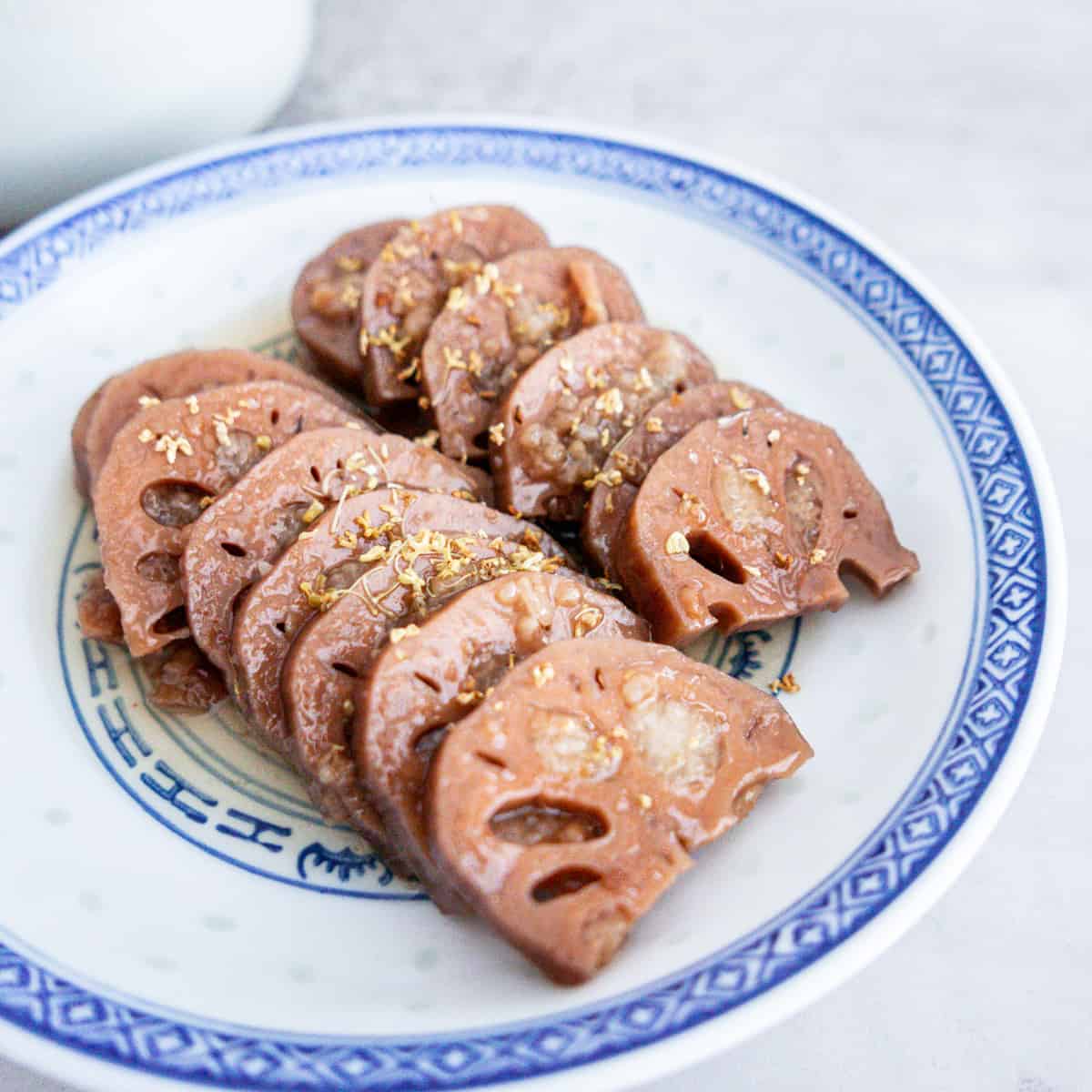
> In This Post: Everything You'll Need For The Best Osmanthus Lotus Root Stuffed Glutinous Rice 桂花糯米藕
This floral infused lotus root drizzled with flowery, sweet osmanthus sauce is one of my favourite desserts made with fresh lotus root. While the main ingredients are simple, this classic appetizer from the Jiangsu province in Southern China is a labour of love and takes a lot of patience.
Copious amounts of glutinous rice are stuffed into the holes of the lotus root vegetable, a little bit at a time. Once filled, the whole lotus root is simmered and slow-cooked in sugary broth until soft. Compared to other lotus root dishes, which highlight crispy lotus root with meat filling ingredients, a bite into a slice of lotus root will reveal its tender, sticky and fragrant texture.
Check out this quick story summary of our recipe!
Jump to:
- > In This Post: Everything You'll Need For The Best Osmanthus Lotus Root Stuffed Glutinous Rice 桂花糯米藕
- Lotus Roots Health Benefits & TCM Properties
- Ingredients and Substitutes
- Instructions
- Osmanthus Infused Syrup 桂花糖浆
- What To Serve With Instant Pot Sweet Lotus Root Stuffed Sticky Rice
- > Recipe Card
- Osmanthus Lotus Root Stuffed Glutinous Rice 桂花糯米藕
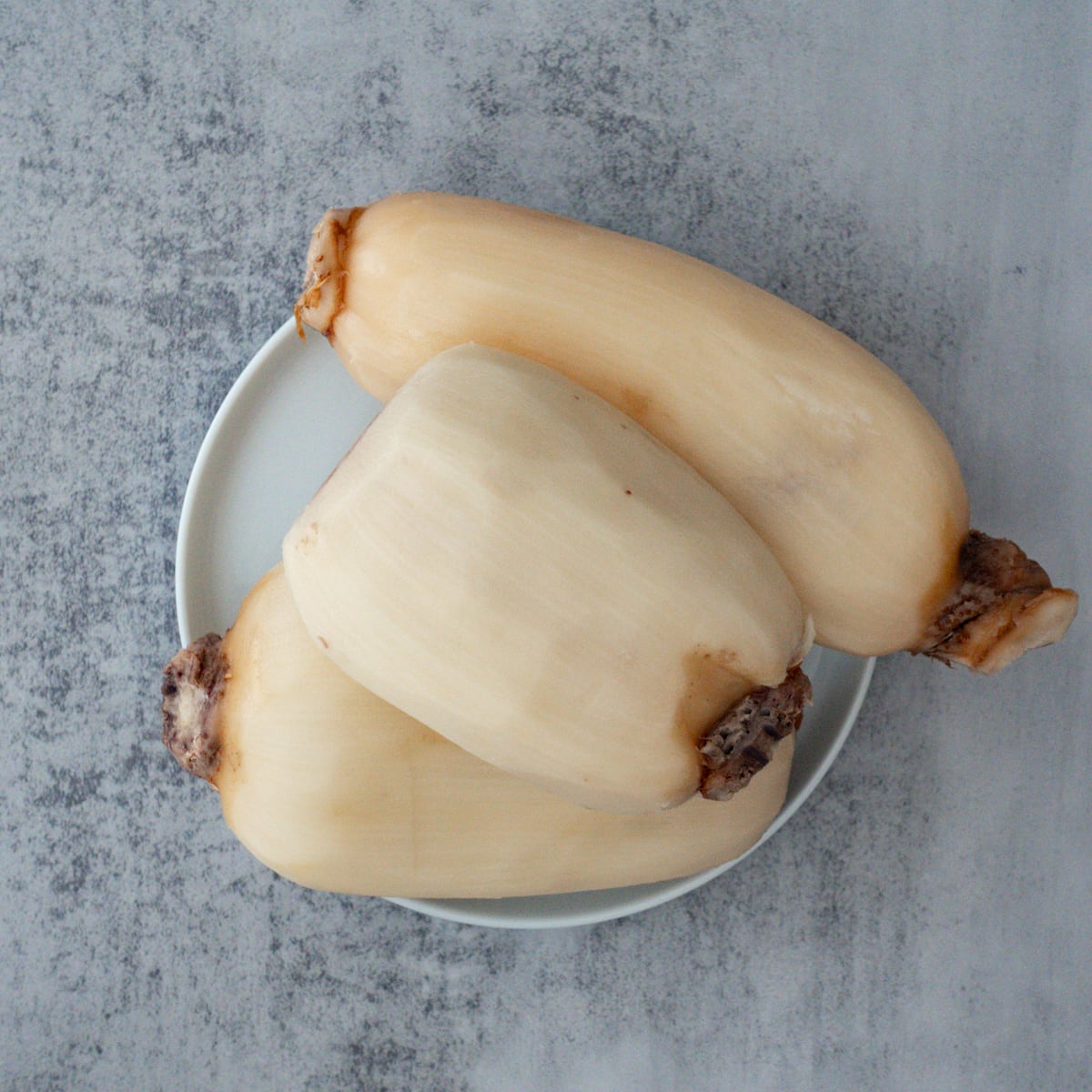
What Are Lotus Roots?
In Chinese, Lotus Root is called 藕节,Ǒu jié or 蓮藕, Lián'ǒu. The lotus root is the edible rhizome of the lotus plant. The rhizome is a subterranean stem that grows horizontally as a line of interconnected root structures connected by nodes.
Lotus roots are available year-round and peak seasonally during Fall through Winter.
Other Lotus Root Recipes
Here are a couple lotus root-forward recipes I am genuinely obsessed with from the blog! Both these recipes are delicious and easy to make!
- Red Fermented Bean Curd Lotus Root Spareribs 南乳蓮藕炆排骨
- Lotus Root Pork Bone Soup without Peanuts
- Lotus Root Stir Fry
- Korean Lotus Root

Lotus Roots Health Benefits & TCM Properties
Lotus Roots enter the liver, lung and stomach meridians.
According to Traditional Chinese Medicine, raw and cooked lotus roots have different effects. This "spiritual root (灵根)," according to traditional Chinese medicine, raw and cooked lotus roots have different effects.
Specifically, the beautiful lotus flower's roots beneath mud are rich in essential minerals and Vitamin C, which supports immunity; Copper, which improves cognitive functions; Potassium, which improves heart health and blood circulation; and dietary fiber, which aids digestion.
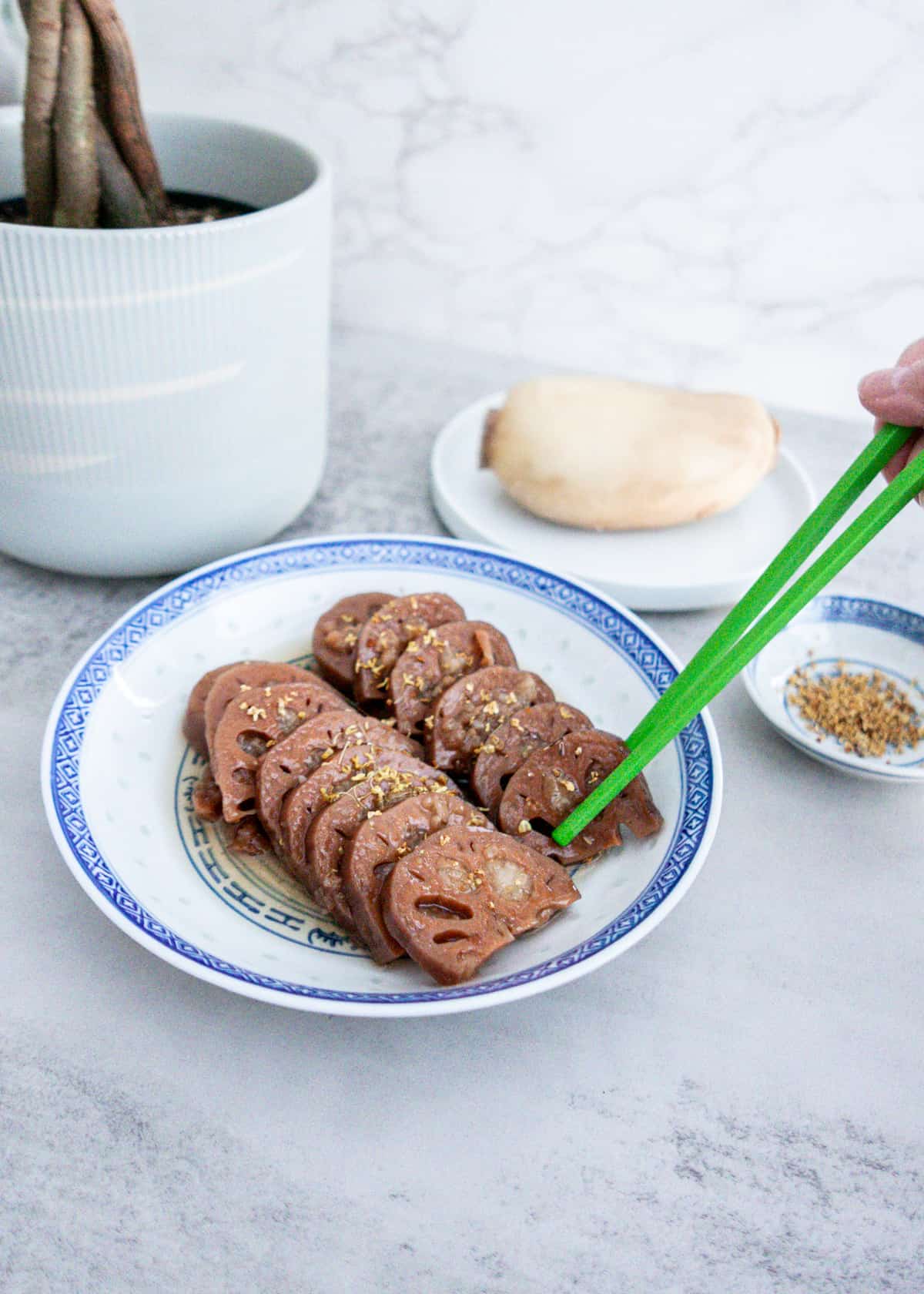
Ingredients and Substitutes
This easy-to-make plant-based Instant Pot pressure cooker classic Chinese New Year dessert is elegant and soothing. The lotus root slices are like a warm hug as we enter Autumn Equinox and the temperatures dip.
Lotus Root (蓮藕, Lián'ǒu) - The lotus root is the edible rhizome of the lotus plant. The rhizome is a subterranean stem that grows horizontally as a line of interconnected root structures connected by nodes. When sliced crosswise, holes appear in the sections of the lotus root. Select shorter, chubbier lotus roots that have more girth vs ones that are long and lean. It will make stuffing glutinous rice easier!
Glutinous Rice (糯米, Nuòmǐ) - Sticky rice is a type of short-grain rice that softens and clumps together when cooked and forms a sticky texture. Glutinous rice is gluten-free. Stuffed roots with rock sugar syrup form a sticky paste that intertwines with silky lotus roots. A good substitute is black glutinous rice 紫糯米.
Rock Sugar (冰糖, Bīngtáng) - Rock sugar is a type of sugar commonly used in Chinese cooking. Rock sugar tastes milder than white granular sugar but has a more caramel-like flavour. Choose multicrystal type rock sugar (more significant crystal sugar with an irregular shape) instead of monocrystal (small square shape with a smooth surface). Rock sugar tastes are unique and challenging to replace with white sugar. Chinese dark brown sugar slabs are a close substitution.
Dried Osmanthus Flower (桂花, Guìhuā) - These tiny, sweet, beautiful golden edible flowers, according to TCM, reduce coughing and phlegm in the lungs, reduce dampness, aid digestion and reduce abdominal pain. Dried osmanthus flowers are famous for their unique aroma and flavour and are commonly made into osmanthus tea and desserts like this osmanthus flower jelly.
Osmanthus syrup can be replaced by honey, but honey will not have the sweet, refreshing profile of osmanthus-infused syrup!
Red Dates (紅棗, Hóngzǎo) - Chinese dates (Jujube fruits) are sweet and warm and enter the heart, spleen, and stomach meridians. Ziziphus jujube's edible fruits are highly nutritious and contain plenty of vitamin C and minerals such as calcium, phosphorus, iron and magnesium. A daily Three Reds Digestive Tea cup is terrific for a woman's health!
You can purchase most dry goods ingredients, tools and supplies at your local Asian grocery stores or online at my Amazon Store. I have linked the products for your convenience!
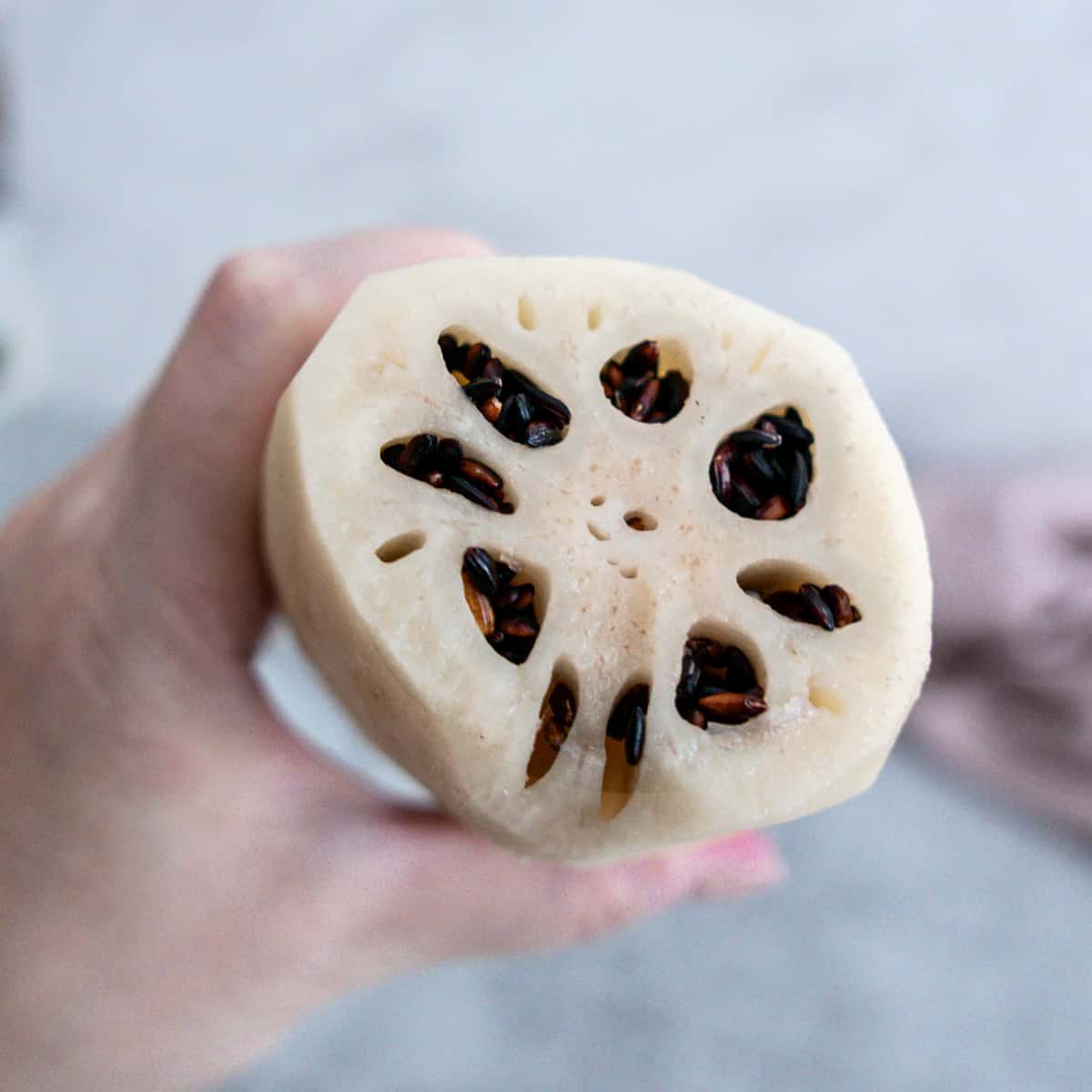
Instructions
By far, pressure cooking in the Instant Pot is the easiest method to make Authentic Stuffed Lotus Root with Sticky Rice! This crowd-favourite Cantonese chicken recipe is deliciously succulent, tender and bursts with pure chicken flavour!
Although there are a few steps in the cooking process, I guarantee you will nail making the best lotus root dessert ever if you follow our step-by-step instructions!
Wash and pat dry lotus roots. Cut off the end of each section of the nodes. Do not discard. You will use the end caps as a lid to keep the sticky rice from falling out.
There is no need to soak the sticky rice ahead of time. Cooking the sticky rice in the pressure cooker will soften it enough. If you are slow-cooking on the stovetop, consider soaking glutinous rice for at least 3 hours.
Wash the sticky rice and drain well.
Carefully and patiently stuff each lotus root hole with glutinous rice until all the tubes are filled with glutinous rice. Leave space at the end of each lotus root piece for the sticky rice to expand during cooking!
This is a time-consuming project, not a recipe to attack during the weekday. Instead, meal prep this sticky rice stuffed lotus root ahead of time.
Pro Tip: Use a chopstick to push the sticky rice into the lotus root holes. Alternatively, you can slap the side of the node or bang it gently on the table or kitchen counter!
Once the lotus roots are stuffed, fasten the lotus root end caps on top of the primary root with a few toothpicks. Try to gently push the toothpicks as far in as you can.
Place the secured lotus roots into the instant pot. Fill the pot with enough cold water to cover the submerged lotus roots.
Pro Tip: Keep a 2:1 ratio between water and sugar.
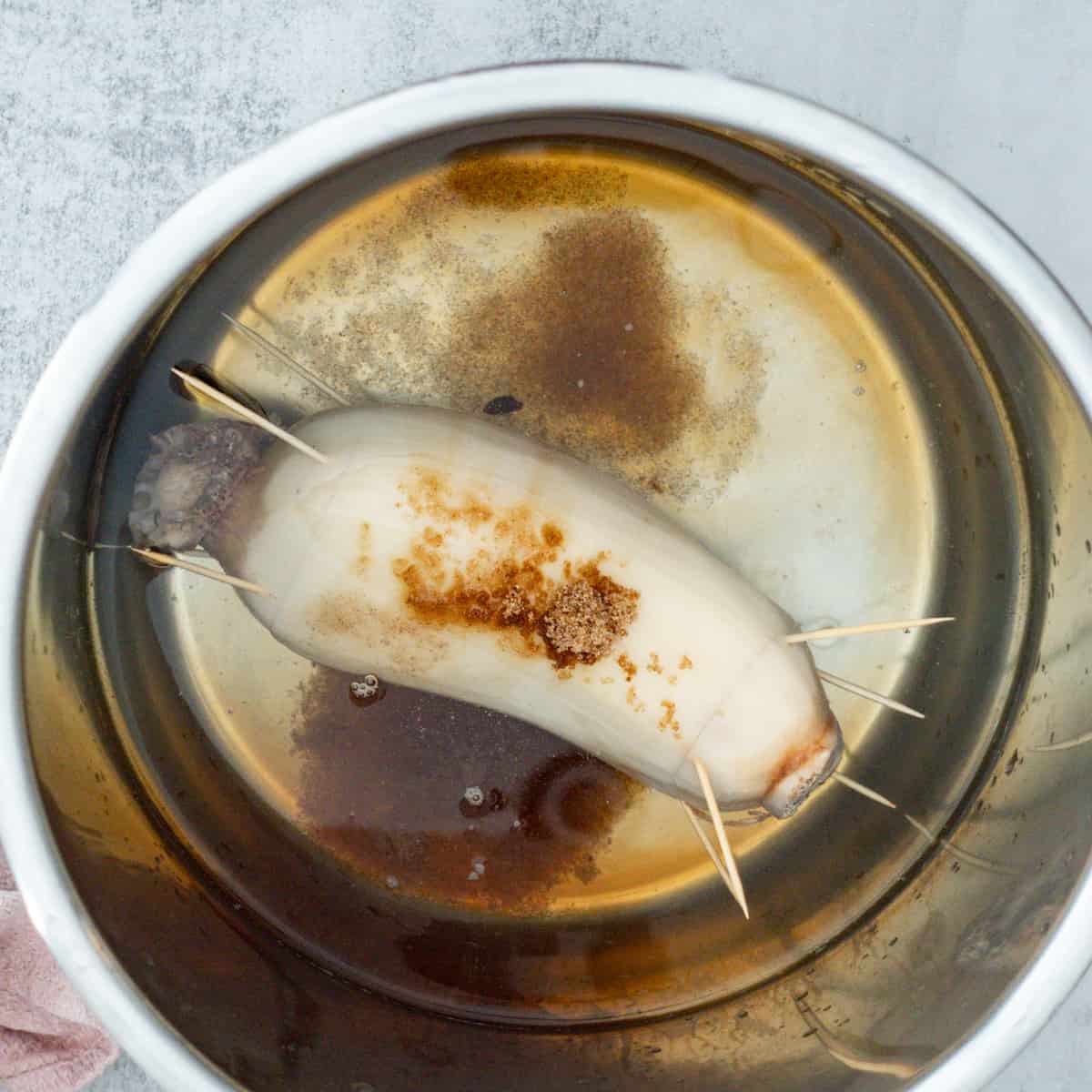
Add remaining ingredients: rock sugar or Chinese dark brown sugar, rate dates and dried osmanthus flowers.
Close the lid, set the pressure cooker to high pressure for 20 minutes, and let it naturally release pressure.
As you open the lid, you will notice a strong aroma of osmanthus fragrant syrup filling the air.
Remove and simmer for 5-10 minutes to reduce and thicken the syrup water.
Let the stewed lotus root stuffed with sticky rice steep in the sugar syrup overnight.
The next day, the lotus root will develop a lovely deep red colour. Most importantly, the sweetness will have penetrated the sticky rice thoroughly!
Remove the toothpicks and cut the lotus root into even-thick slices, approximately 1 cm thick.
Assembly
Transfer sliced lotus roots to a serving plate and drizzle with cold or warm Osmanthus Infused Syrup 桂花糖浆.
Garnish with dried osmanthus flowers if desired.
Serve and Enjoy.
These classic Chinese household sweet treats will quickly become one of your favourite desserts!
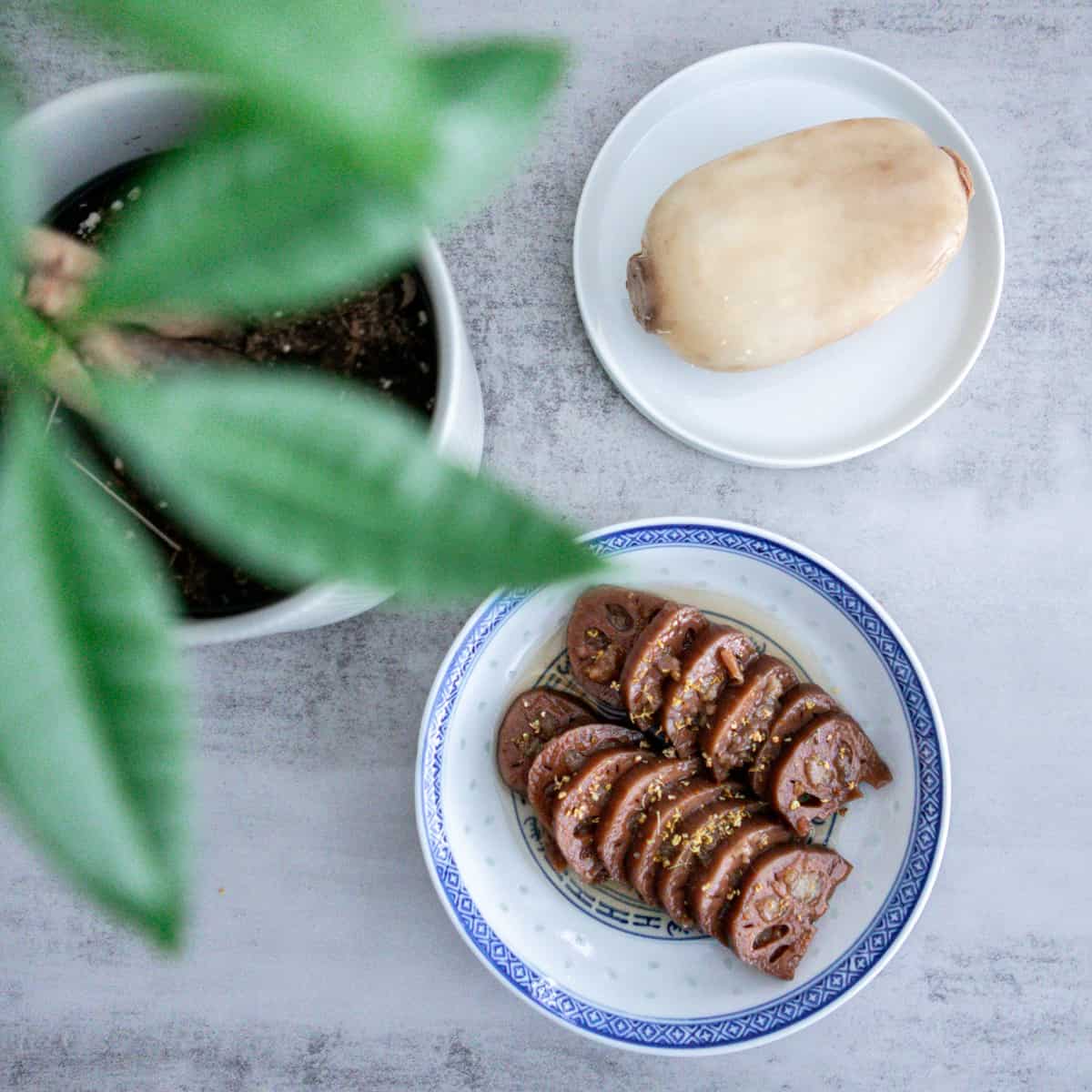
Osmanthus Infused Syrup 桂花糖浆
Make Osmanthus Infused Syrup ahead of time while the lotus root is cooling overnight. Use 250ml of stewing liquid and add rock sugar.
Simmer over low-medium heat until the sugar dissolves. Stirring frequently to prevent burning.
Reduce the syrup by 50% or the desired viscosity! Store in an airtight jar and set aside.
What To Serve With Instant Pot Sweet Lotus Root Stuffed Sticky Rice
This great recipe is a delicious vegetarian dessert with a soothing, sweet taste full of warmth in Chinese cuisine. It is perfect as a dessert for special occasions!
Enjoy this elegant stewed lotus root as an appetizer to start a meal or a dessert.
Complete the meal with the following delicious dishes.
- Stir-Fried Bean Sprouts and Chives 爆炒豆芽菜韭菜
- Fish Maw Crab Meat Soup 蟹肉魚肚羹 (鱼膘羹)
- Instant Pot Braised Chinese Mushrooms 髮菜炆冬菇食譜
- Microwave Soy Sauce Chicken Wings 豉油雞翅微波爐
- Chinese Tomato Egg Stir-fry 番茄炒蛋
After eating lots of heavy, rich, and deep-fried foods, a great way to reduce heat is with a bowl of this liver-detoxing Chinese Sweet Mung Bean Soup 綠豆沙 or Hawthorn Goji Berry Tea Digestion Tea 山楂杞子茶 that aids digestion.
I'd love to see how you went with my recipes! Leave a comment below or tag me on Instagram @INSTANOMSS #INSTANOMSS.
> Recipe Card
PrintOsmanthus Lotus Root Stuffed Glutinous Rice 桂花糯米藕
桂花糯米藕 Osmanthus Lotus Root Stuffed Glutinous Rice is a delightful vegan dessert enjoyed during Chinese New Year and Mid Autumn Festival. The fragrant aroma of sweet-scented osmanthus syrup coating tenderly braised sweet stuffed lotus root with sweet sticky rice is a delicious recipe rich in Traditional Chinese Medicine health benefits.
- Prep Time: 20
- Cook Time: 30
- Total Time: 50 minutes
- Yield: 2 people 1x
- Category: Dessert
- Method: Instant Pot
- Cuisine: Chinese, Vegan
- Diet: Vegan
Ingredients
Stuffed Lotus Root With Glutinous Rice 桂花糯米藕
- 2 Lotus Roots (approximately ½ lbs each)
- 1 C Glutinous Rice (Sweet Sticky Rice)
- 100g Rock Sugar
- 5 Chinese Red Dates (Jujubes)
- 1 tbsp Dried Osmanthus Flower and extra for garnish
- 2L Cold Water or enough to just submerge lotus roots
Osmanthus Infused Syrup 桂花糖浆
- 250ml of Stewing Liquid from above
- 50g Rock Sugar
Instructions
- Wash and pat dry lotus roots. Cut off the end of each section of the nodes. Do not discard. You will use the end caps as a lid to keep the sticky rice from falling out.
- There is no need to soak the sticky rice ahead of time. Cooking the sticky rice in the pressure cooker will soften it enough. If you are slow-cooking on the stovetop, consider soaking glutinous rice for at least 3 hours.
- Wash the sticky rice and drain well.
- Carefully and patiently stuff each lotus root hole with glutinous rice until all the tubes are filled with glutinous rice. Leave space at the end of each lotus root piece for the sticky rice to expand during cooking!
- This is a time-consuming project, not a recipe to attack during the weekday. Instead, meal prep this sticky rice stuffed lotus root ahead of time.
- Once the lotus roots are stuffed, fasten the lotus root end caps on top of the primary root with a few toothpicks. Try to gently push the toothpicks as far in as you can.
- Place the secured lotus roots into the instant pot. Fill the pot with enough cold water to cover the submerged lotus roots.
- Add remaining ingredients: rock sugar or dark brown sugar slabs, rate dates and dried osmanthus flowers.
- Close the lid, set the pressure cooker to high pressure for 20 minutes, and let it naturally release pressure.
- As you open the lid, you will notice a strong aroma of osmanthus fragrant syrup filling the air.
- Remove and simmer for 5-10 minutes to reduce and thicken the syrup water.
- Let the stewed lotus root stuffed with sticky rice steep in the sugar syrup overnight.
- The next day, the lotus root will develop a lovely deep red colour. Most importantly, the sweetness will have penetrated the sticky rice thoroughly!
- Remove the toothpicks and cut the lotus root into even-thick slices, approximately 1 cm thick
Assembly
- Transfer sliced lotus roots to a serving plate and drizzle with cold or warm Osmanthus Infused Syrup 桂花糖浆.
- Garnish with dried osmanthus flowers if desired.
- Serve and Enjoy.
- Osmanthus Infused Syrup 桂花糖浆
- Make Osmanthus Infused Syrup ahead of time while the lotus root is cooling overnight. Use 250ml of stewing liquid and add rock sugar.
- Simmer over low-medium heat until the sugar dissolves. Stirring frequently to prevent burning.
- Reduce the syrup by 50% or the desired viscosity! Store in an airtight jar and set aside.
Equipment
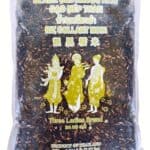 Buy Now →
Buy Now → 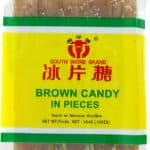
Chinese dark brown sugar slabs
Buy Now →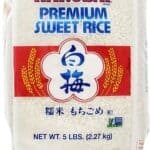 Buy Now →
Buy Now →  Buy Now →
Buy Now →  Buy Now →
Buy Now →  Buy Now →
Buy Now → Notes
- Use a chopstick to push the sticky rice into the lotus root holes. Alternatively, you can slap the side of the node or bang it gently on the table or kitchen counter!
- Keep a 2:1 ratio between water and sugar.
Nutrition
- Serving Size: 1 plate
- Calories: 525
- Sugar: 57.4 g
- Sodium: 13.3 mg
- Fat: 13.1 g
- Carbohydrates: 100.5 g
- Fiber: 3.5 g
- Protein: 5.4 g
- Cholesterol: 0 mg
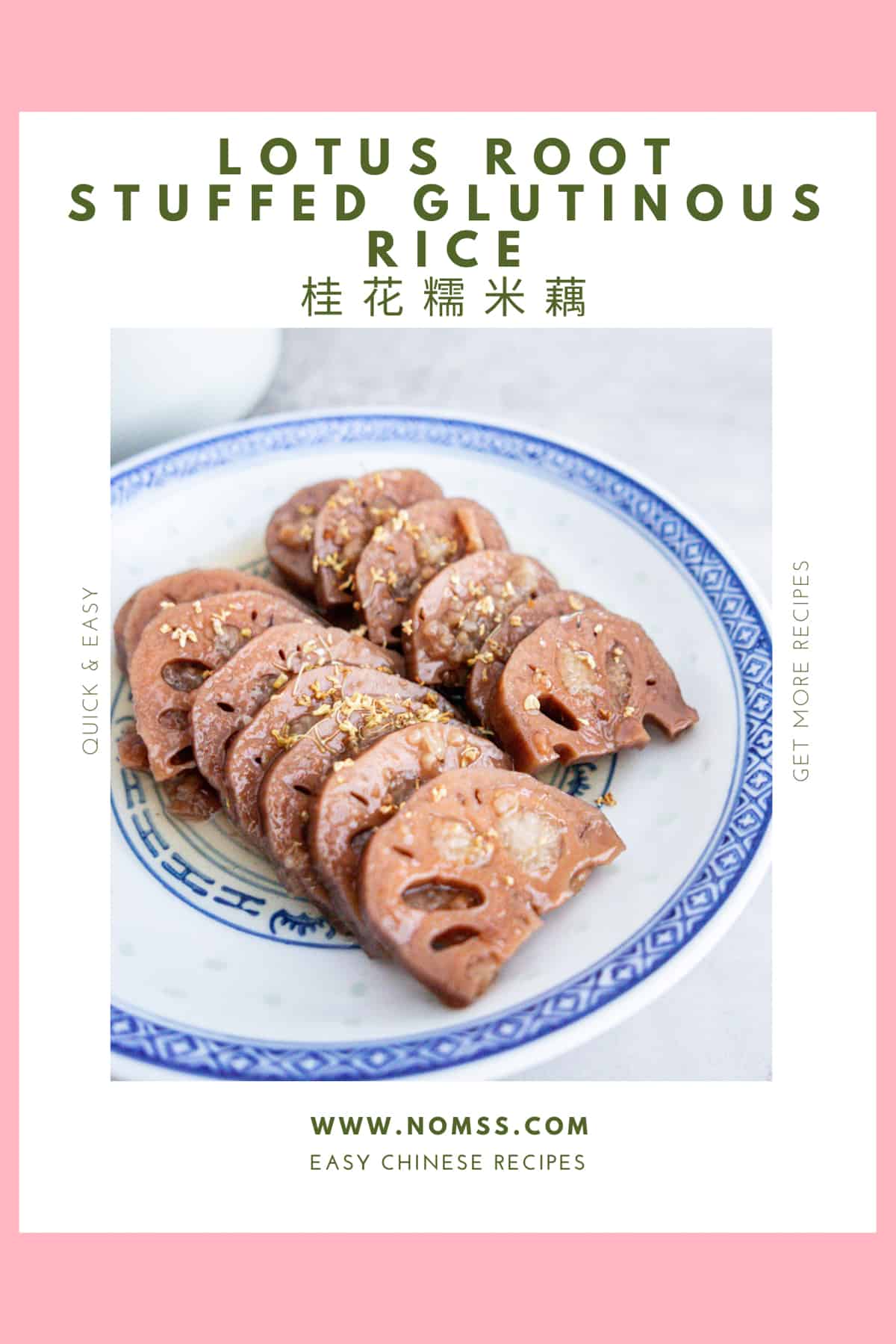
Pin the above image to your Asian Vegan Recipe Pinterest Board to bookmark this page. We are so excited to share our recipes with you!
MORE VEGAN RECIPES:
- Super Alkaline Kale Salad
- Double-Steamed Snow Pear with Fritllaria Bulb Recipe 川貝燉雪梨
- Hawthorn Goji Berry Tea 山楂杞子茶
- Vegan Stuffing
- Air Fryer Salt and Pepper Tofu
- Vegan Okonomiyaki Cauliflower Bites
- Anti-Inflammatory Vegan
- Hojicha Oat Milk Nice Cream (No Churn, Egg Free, Dairy Free)
- No Mayo Apple Vinegar Coleslaw
- Traditional Dalgona Whipped Coffee Recipe 달고나 커피
- Espresso Latte with Dalgona Chocolate Recipe (Easy)
- Best Vegan Korean Spicy Beef Stew (Yukgaejang) 육개장
- NeNe Chicken Vancouver
This post contains affiliate links and/or products submitted to Nomss for editorial consideration. To find out more, please visit our About/Disclaimer page.
Remove Ad-Block to view shopping guide!



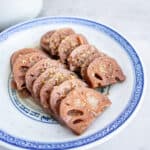
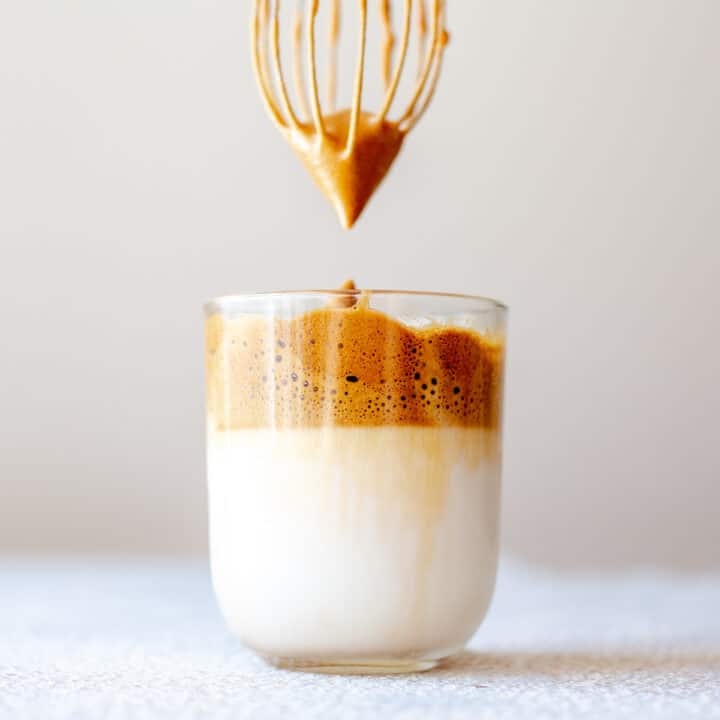
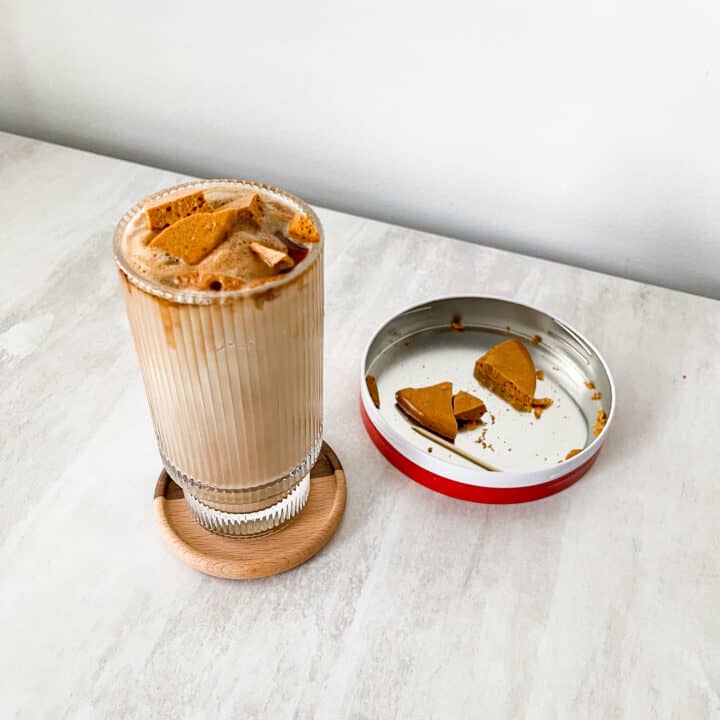
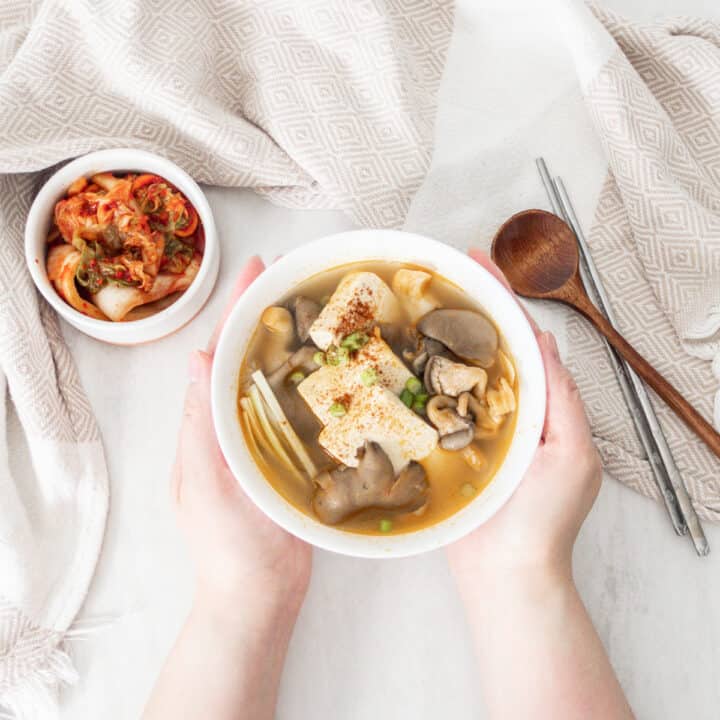

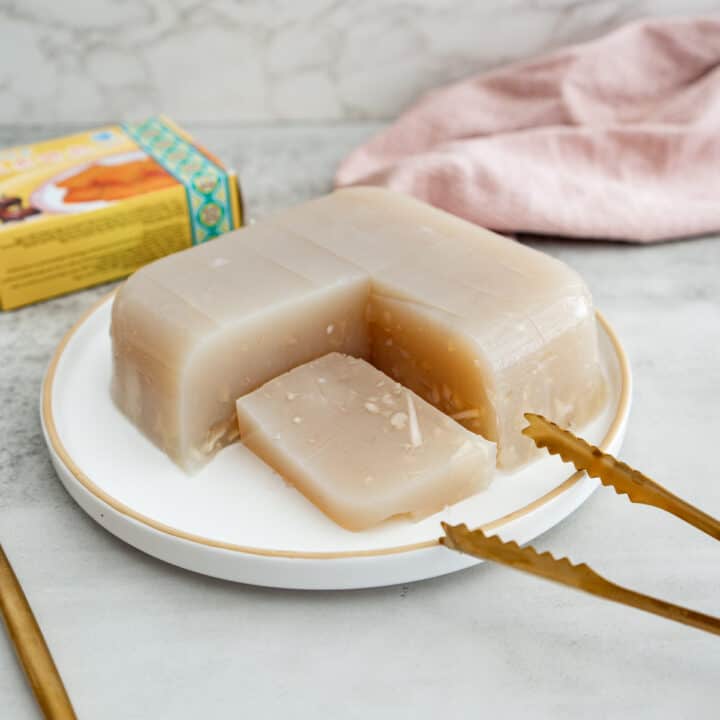


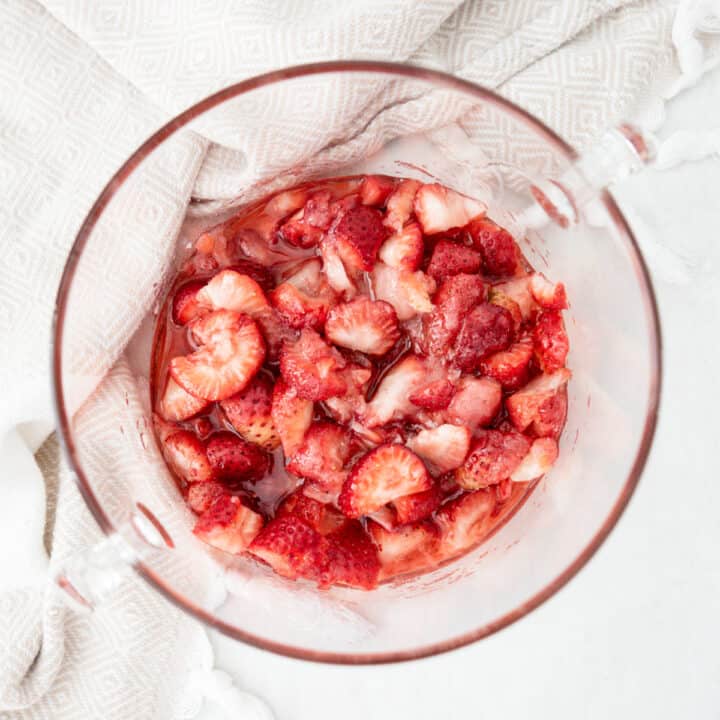


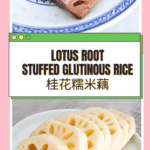
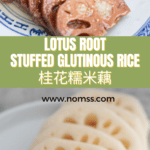
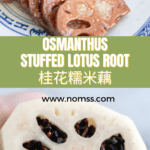
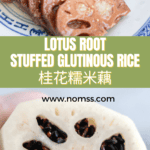
Mina says
This is such an interesting recipe and I would love to try this soonest! Thanks for sharing the recipe.
Andréa says
I've never heard of rosmanthus lotus root, but they sure look delicious. Love the background that you gave, when to eat it and the pro tips makes this recipe so much easier. Thank you!
Helen at the Lazy Gastronome says
I love Chinese food and this recipe makes it easy to make at home. I’m fortunate enough to live near an Asian grocery store so I can get most of the ingredients.